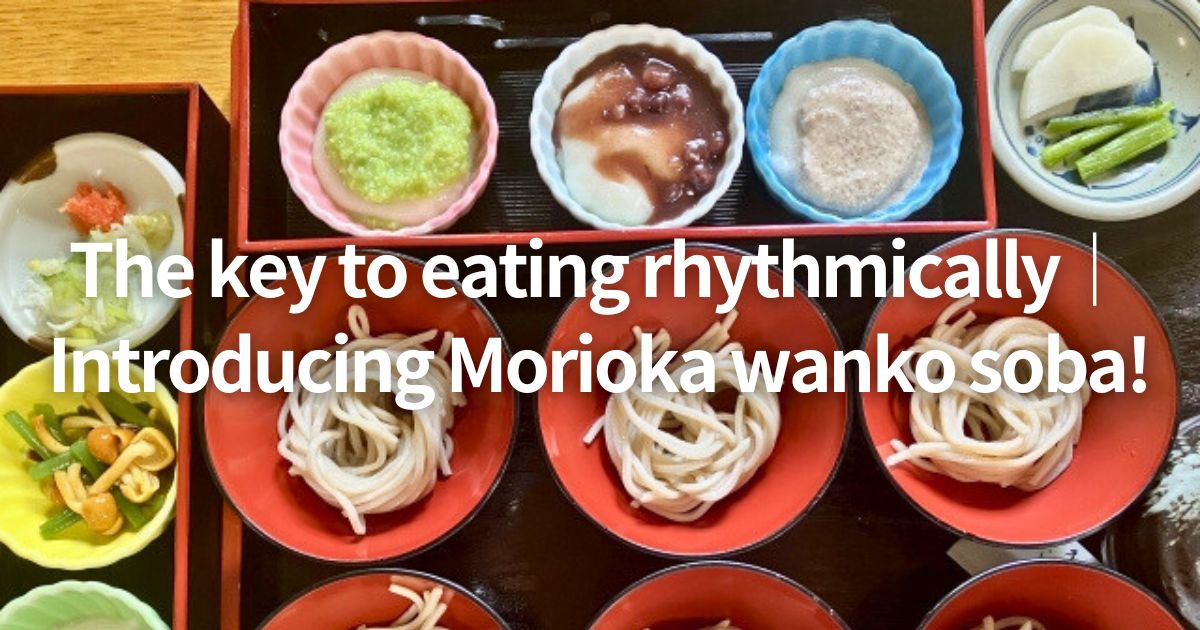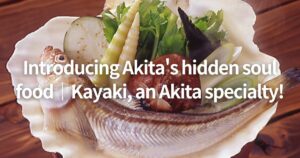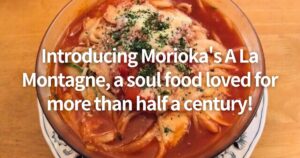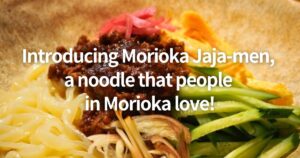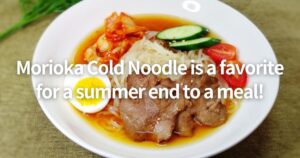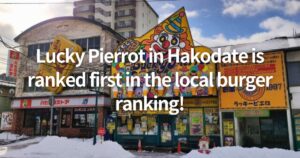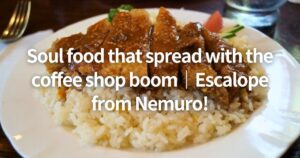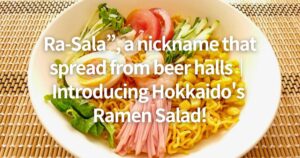There are many reasonably priced and delicious foods in the provinces compared to Tokyo, and Morioka wanko soba is another one I would like to recommend.
Hmm? What is Morioka wanko soba? Many people may be wondering.
Wankosoba is a dialect word in the Morioka region that refers to a bowl, and it is very enjoyable to rhythmically eat bite-sized buckwheat noodles served one after the other in a wankosoba bowl.
In addition, there are no particular rules for how wanko soba is milled, and many restaurants make the soba softer so that it can be eaten easily.
In addition, the bowls are filled with dipping sauce, and when you finish a bowl of wanko soba, another bowl of dipping sauce is added with a shout of “Hai, yoso” (meaning “good luck”), which is also fun.
In this article, I will explain the history of Morioka wanko soba, its appealing points, recommended restaurants and menus, and sightseeing spots in the area, while also sharing my own experiences.
I hope you will find this article a good opportunity to learn about Morioka wanko soba.
How did Morioka wanko soba originate?


There are various theories on the origin of wanko soba, but two of the most famous are the Hanamaki and Morioka theories.
According to the Hanamaki theory, the 27th head of the Nanbu family, Lord Toshinao, stopped by Hanamaki on his way to Edo (present-day Tokyo) and was so pleased with the soba served in a flat bowl to the local people that he repeatedly ordered more.
According to the Morioka theory, the popularity of wanko soba spread when the commoner Prime Minister Hara Takashi, who was known for his love of soba, ate soba in Morioka and praised it, saying, “Soba is only served in a bowl.
Wanko soba is also said to have originated from the ancient custom of “serving soba” in the southern part of Japan.
In order to serve freshly boiled soba to a large number of customers at once, it was served in small portions in small bowls, which is believed to be the prototype of wanko soba.
Why is there a shout when eating Morioka wanko soba?


The “Yes, go on, go on” and “Yes, jan-jan” shouts that are used when eating wanko soba are intended to enhance the interaction between the waiter and the customer.
These calls make the meal more enjoyable and stimulate the customer’s appetite.
In addition, when the waiter is at the side of the customer and immediately adds another bowl of soba when the bowl is empty, the shouting creates a rhythm that amplifies the pleasure of eating.
Wow. It’s true that the rhythmic style makes it easier to eat at a faster pace. Interesting…
Three Attractions of Morioka Wanko Soba
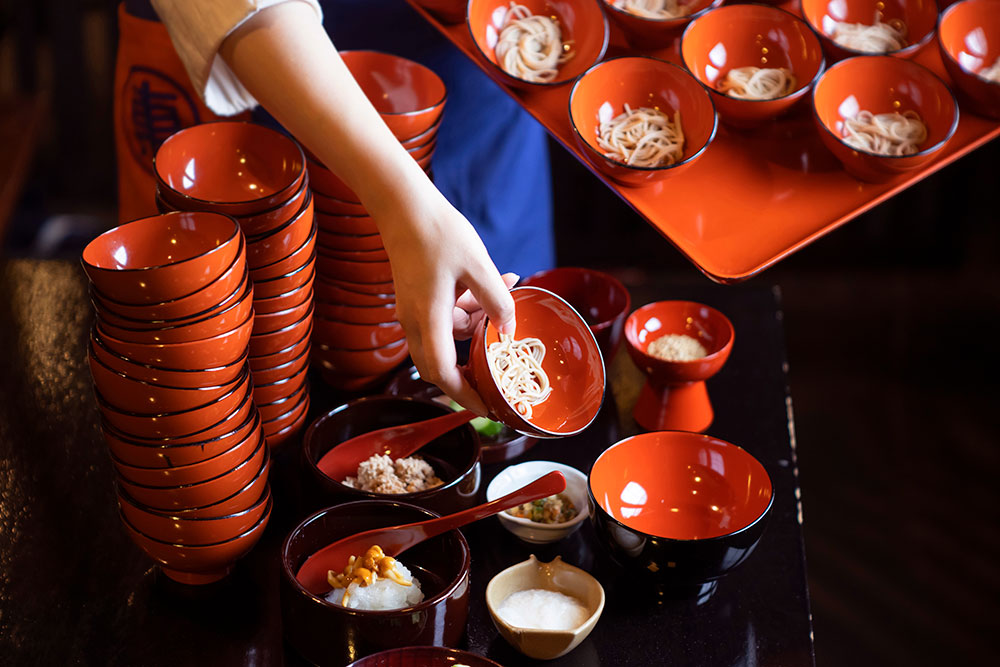

I have summarized some of the attractions of Morioka wanko soba.
An experience where the spirit of hospitality comes alive
Morioka wanko soba has its roots in the ancient culture of serving soba in the Iwate region.
The custom of serving a second bowl of soba to a guest repeatedly expresses respect and gratitude for the guest’s hospitality.
The waiter’s continuous pouring of the soba while shouting “Yes, more and more” is also a part of the hospitality.
This custom, which emphasizes heart-to-heart communication with the eater, is a valuable experience for foreign visitors to Japan, allowing them to experience the warmth of the Japanese character.
An entertaining meal
Wankosoba is not only a food to be eaten, but also an attraction to be enjoyed.
The speedy exchange of soba being poured into empty bowls one after the other and the shouts of the waiters add to the atmosphere.
Some restaurants offer a competition in which participants count the number of bowls they have eaten and receive a certificate or souvenir when they reach 100 bowls, making it a fun challenge.
This style of dining, where the meal becomes an event, is a very unique and unforgettable experience for foreign visitors.
Special buckwheat noodles that go down your throat
Soba noodles specially made for wanko soba are made to be light and smooth so that dozens of bowls can be eaten.
It is thinner and slightly softer than regular soba, making it easy to eat.
Several kinds of dipping sauces and condiments are available, so that customers can enjoy the different tastes and never get tired of eating soba.
The quality of the soba itself is also a particular concern, and the fact that you can enjoy both “tasting” and “eating quantity” is another reason why soba is so popular among foreign visitors to Japan.
Indeed. It’s good that you can enjoy the taste and texture of the soba even though it is more of an event.
My recommendation for Morioka wanko soba restaurants
In this article, I will introduce some of the best Morioka wanko soba restaurants and their recommended menus.
Morioka wanko soba restaurants I recommend
Morioka wanko soba restaurants I recommend
The main store of Azumaya
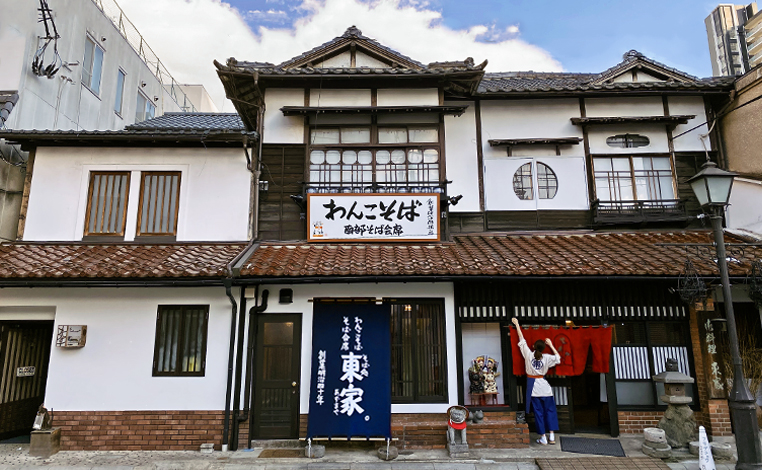

✅ Recommended Points
- Founded in 1907, Azumaya is a long-established restaurant and is famous as the originator of Morioka wanko soba.
- In the relaxed atmosphere of the traditional wooden building, soba noodles are served in a rhythmic rhythm with cheerful shouts, allowing you to experience wanko soba as a part of the food culture.
- The restaurant is popular among foreign visitors to Japan, and the staff is courteous.
- The service of receiving a certificate recording the number of bowls you have eaten is also popular as a memory-making experience, and this restaurant can be enjoyed by groups and individuals alike.
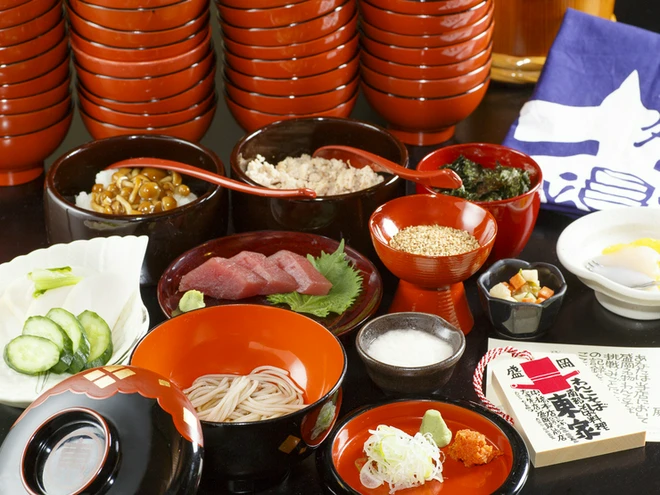

✅ Recommended menu
- Wankosoba Experience Course
- The “Wanko Soba Experience Course” is a standard menu item for Morioka sightseeing.
- The soba is served in small portions, and the live performance of the soba being poured into bowls one after another is very appealing.
- More than 10 kinds of condiments such as tuna, minced chicken, nameko mushrooms, green onions, and wild vegetables are included to add variety to the flavor and keep you coming back for more.
- A commemorative handprint will be presented to those who have eaten more than 100 bowls, inspiring a challenge.
The main store of Hatsukoma
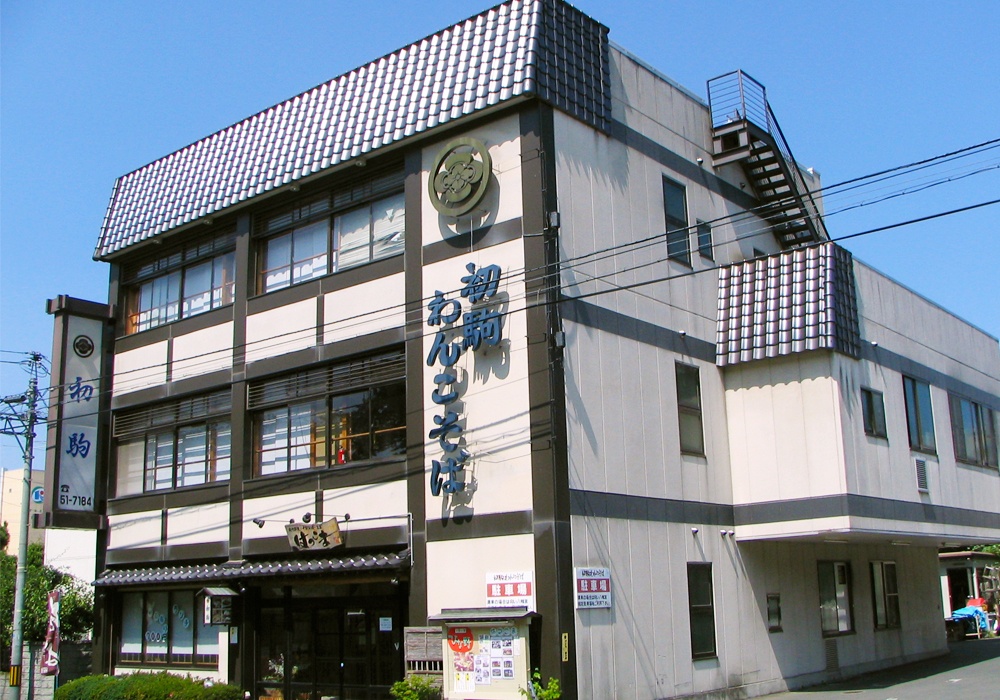

✅ Recommended Points
- Established in 1960, this quiet and elegant old store is located near Morioka Hachimangu Shrine.
- The wooden storefront and courteous service are attractive, and you can enjoy your meal in a relaxed atmosphere.
- The restaurant is popular not only with local customers, but also with tourists and foreigners, and offers both prestige and casual atmosphere.
- It offers modern service while preserving tradition, making it a safe place to visit even for independent travelers.


✅ Recommended menu
- Wankosoba Challenge Set
- The “Wanko Soba Challenge Set” is a popular menu item that allows you to enjoy traditional soba to the fullest.
- The set comes with special condiments, a small bowl of cooked food, and miso soup, allowing you to enjoy a variety of flavors.
- In addition, we also offer a la carte soba such as tempura soba and kamo nanban, which is recommended for those who prefer to enjoy the taste rather than the quantity.
- There is also a small tatami room and a tatami room for a relaxing Japanese dining experience. Reservations are also available.
YABUYA Fezzan store


✅ Recommended Points
- This is a branch of the long-established soba restaurant Yabuya, established in 1923, and located in the basement of the Morioka Station Building “Fezzan” for easy access.
- The location makes it easy to stop by during your trip, and the modern Japanese-style interior is a unique feature of the restaurant.
- It is a great place to experience wanko soba for the first time, and the friendly staff is popular among foreign tourists as well .
- It is also an easy-to-enter restaurant that is perfect for lunch while shopping.


✅ Recommended menu
- Wanko Soba Set
- The “Wanko Soba Set” is a beginner’s menu that allows you to enjoy a small portion of authentic soba.
- The set includes hot soup with basic soup stock and condiments such as wasabi, nori (seaweed), and tororo (grated yam) for an enjoyable change of taste.
- The restaurant also offers a wide variety of other options, such as Kamo-seiro-soba and Tenzaru-soba, which are also very popular.
- The menu is well-balanced and can be enjoyed as a light meal in between trips.
Oh. Each restaurant has its own unique atmosphere and menu recommendations, so it’s hard to decide where to go…
Column: How did Morioka wanko soba become a food culture of repeatedly having another bowl?
The reason why Morioka wanko soba has become a food culture where one has to have another bowl over and over again is due to a unique custom of hospitality in the Iwate region.
In the old days, it was difficult to serve freshly boiled soba all at once at weddings, funerals, and other gatherings, so the custom of serving small portions in bowls and offering refills after each meal was finished was born.
This style is called “otebachi,” and is considered to represent the heartfelt hospitality extended to guests.
Against this backdrop, wanko soba has been passed down from generation to generation as more than just a meal, but as a symbol of warmth and exchange.
Heh. It’s interesting that the custom of hospitality and the fact that it was served in small bowls has its roots in this…
Places to stop by while eating Morioka wanko soba
Here are three recommended places to stop by in Morioka during your meal.
✅ Morioka Handicraft Village
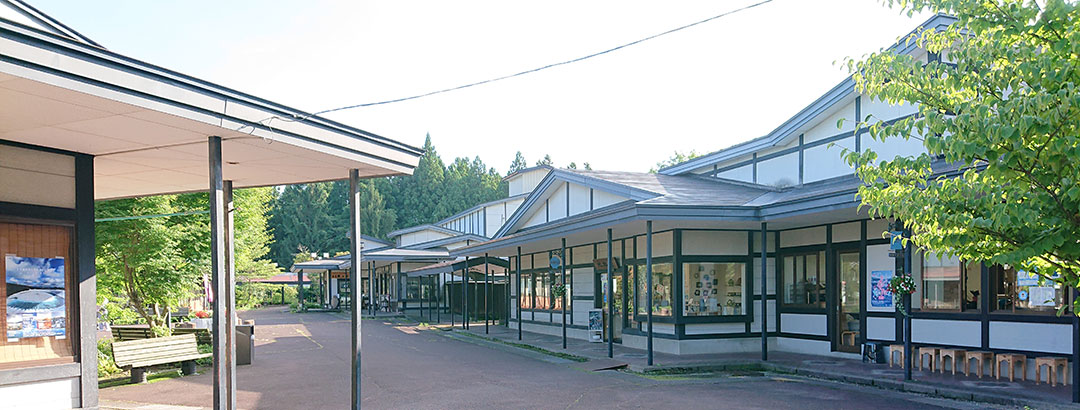

Morioka Handicraft Village is a facility where visitors can experience Iwate’s traditional crafts and local culture.
Visitors can observe the skills of craftspeople up close at workshops that produce Nanbu ironware, Nanbu senbei (rice crackers), and dyed goods.
At some of the workshops, visitors can even try their hand at making their own products, making it a great way to create memories of your trip.
The facility is also home to a store selling local specialties and a restaurant, making it a popular spot for visitors to experience the charms of Iwate all at once.
✅ Specialty Products Plaza La La Iwate Morioka
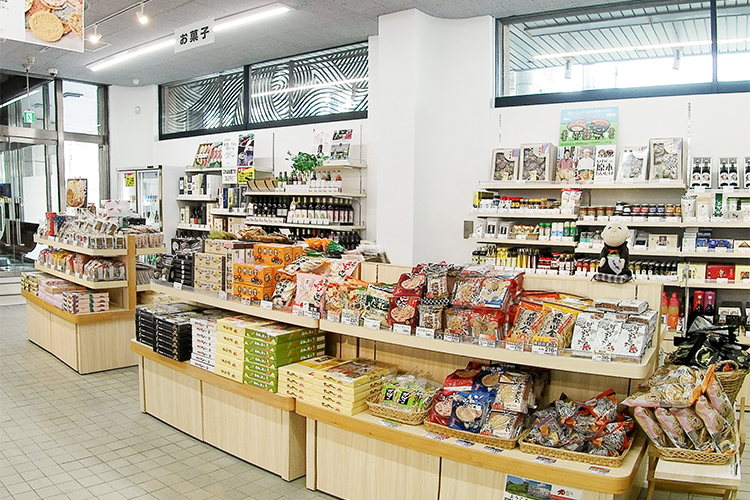

LaLa Iwate is an antenna store that gathers all of Iwate Prefecture’s specialty products.
It offers a wide variety of products with a rich regional flavor, such as Nambu ironware, lacquerware, local sake, and famous confections, making it an ideal place to pick up souvenirs.
The store sometimes holds events and tastings using local ingredients, so you can discover something new every time you visit.
Located within walking distance from Morioka Station, it is also an easy stopover between sightseeing tours.
✅ Strolling the streets of the Konyacho and Natayacho neighborhoods


Konyacho and Natayacho are areas where historical streetscapes dating back to the Edo period remain.
Stone-paved alleys, white-walled warehouses, and old private houses line the streets, creating a time-slip atmosphere.
The area is also dotted with cafes, galleries, and craft stores, allowing visitors to experience the local culture and lifestyle as they stroll around.
Many photo-worthy spots are also available for those who want to spend a relaxing time.
There are many sights concentrated with history and culture, so if you are ever in the neighborhood, please stop by.
Let’s go to Morioka to enjoy the real taste!
Morioka wanko soba is best enjoyed by going there and enjoying the atmosphere, so I would like to recommend some items that would be good to bring along on your trip.
In this article, I will introduce some of my recommended travel items that can be purchased on Amazon.
I hope you will find them useful when considering travel items.
If you are interested, check out the following products on Amazon!




MUJI 82203011 EVA Hanging Case, Approx. 8.7 x 5.7 inches (22 x 14.5 cm), White





